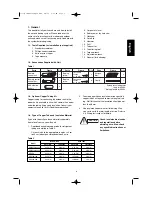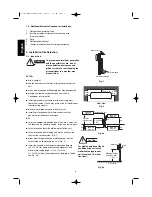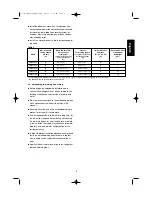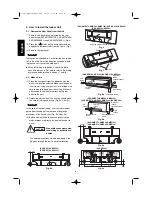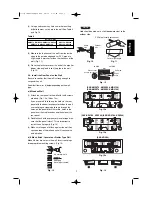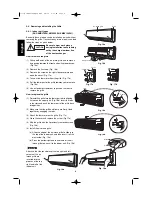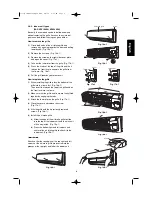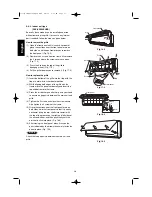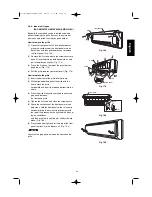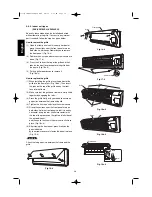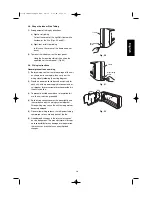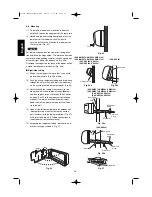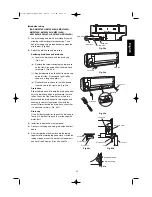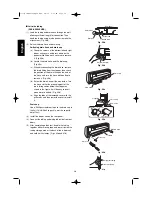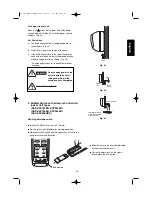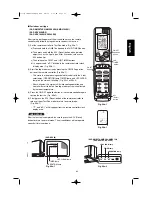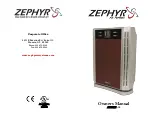
17
English
Hole i
n
wall
Be
n
t part
Narrow t
u
be
Wide t
u
be
Rear pa
n
el
Fig. 38a
Drai
n
cap
Drai
n
ho
s
e
Fig. 39a
I
Left-side tubing
(SAP-KMRV74EH, KMRV94EH, KMRV124EH,
KMRV76EH, KMRV96EH, KMRV126EH,
KRV184EH, KRV244EH, KRV186EH, KRV246EH)
(1) Lead the tubing and drain hose through the wall,
allowing sufficient length for connection. Then
bend the tubing using a tube bender to make the
attachment. (Fig. 38a)
(2) Switch the drain hose and drain cap.
Switching drain hose and drain cap
(a) Locate the drain hose and the drain cap.
(Fig. 39a)
(b) Remove the screws fastening the drain hose
on the right side, and pull out the drain hose
to remove it. (Fig. 39a)
(c) Apply moderate force to pull off the drain cap
on the left side. (If you cannot pull it off by
hand, use a long-nose pliers.)
(d) Reattach the drain hose to the left side and
the drain cap to the right side. (Fig. 40a)
Drain hose
Slide the drain hose fully onto the drain pan outlet
until the drain hose edge is pushed into the insu-
lation. Check that the screw holes in the drain
bracket and the drain pan outlet are aligned and
securely in contact, then fasten them with the
screw. (After attaching the drain hose, check that
it is attached securely.) (Fig. 40c)
Drain cap
Use a Phillips screwdriver to push the drain cap in
firmly. (If it is difficult to push in, wet the cap with
water first.)
(3) Install the indoor unit on the rear panel.
(4) Connect the tubing and wiring led inside from out-
doors.
(5) After completing a leak test, bundle the tubing
together with armoring tape and store it inside the
tubing storage area at the back of the indoor unit
and hold it with clamps. (Figs. 40a and 41a)
Fig. 40a
Fig. 40b
Fig. 40c
Fig. 41a
Refri
g
era
n
t t
u
bi
ng
I
n
ter-
un
it wiri
ng
S
crew
Drai
n
ho
s
e
Drai
n
pa
n
o
u
tlet
S
crew hole
Drai
n
bracket
Drai
n
cap
Clamp
Drai
n
ho
s
e
Drai
n
ho
s
e
Drai
n
bracket
I
nsu
latio
n
07-370 CMRV3146EH_IU ENG 2/6/08 1:31 PM Page 17

